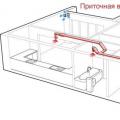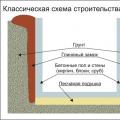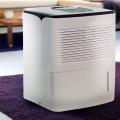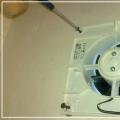Without a ventilation system apparatus, not a single basement can be limited, since with a lack of a constant supply of cool air, dampness cannot be excluded. In basements and cellars, as a rule, not only canned food is stored, but also fresh vegetables and fruits that "breathe", from which humidity will certainly accumulate in the room.
In addition to this problem, the walls can absorb moisture from the earth located at the outer edge if the waterproofing of the base of the house and the basement was poorly organized during construction.
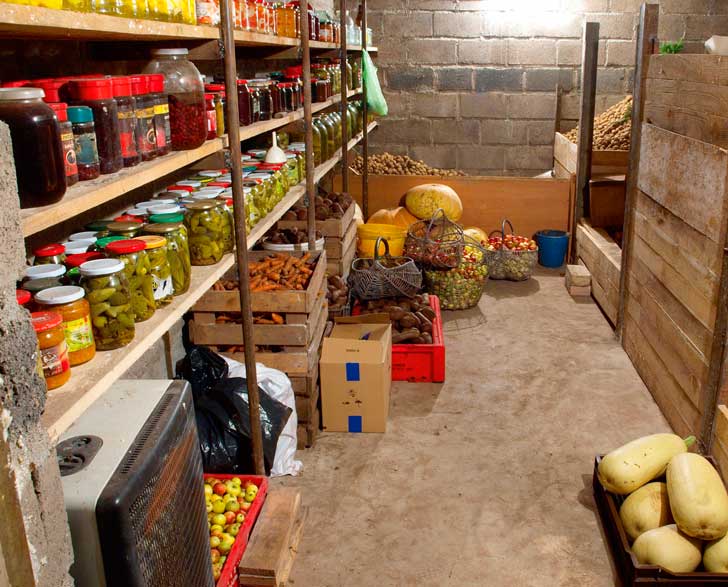 Pretty easy. In addition, it is possible to install and put in order the operation of this concept of continuous air exchange not only on the formation of the building, but also in a previously finished storage.
Pretty easy. In addition, it is possible to install and put in order the operation of this concept of continuous air exchange not only on the formation of the building, but also in a previously finished storage.
The operation of the ventilation concept is based on the laws of physics, and if we carefully analyze its basic scheme, then we can observe that it is organized very easily and clearly.
In the room, 2 ventilation openings are taken into account, through one of which fresh air enters the cellar, and through the second it is removed simultaneously with all fumes. However, the concept would be ineffective if pipes of the established diameter were not connected to the ventilation holes.
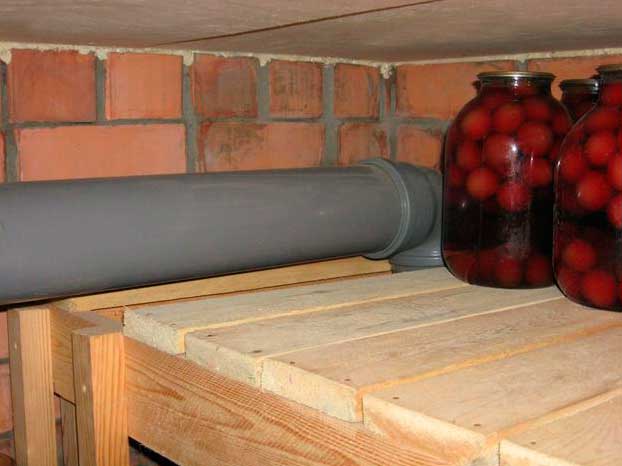 Also, the quality of work is very dependent on the exact location of the exhaust and supply pipes and on their elevation above the soil surface above the cellar.
Also, the quality of work is very dependent on the exact location of the exhaust and supply pipes and on their elevation above the soil surface above the cellar.
Ventilation pipes have every chance of being introduced into the walls of the basement if it is in front of a dwelling or a car garage, or brought out through the ceiling, in this case, if the basement is organized in the yard as a separate building.
Another significant factor in the calculation and installation of the concept is the level of construction of pipes from the basement floor and bringing them out into the street, since a very large amount of cool air can enter the room, which will be unsafe for vegetables stored fresh in chests. It is impossible to make few holes, since the dank air will not leave the entire room, and therefore, the food stored in it will certainly rot.
 Initially, you need to proceed with the installation of any type of ventilation structures, you need to inquire about certain tips that should be taken into account during the period of design and construction work:
Initially, you need to proceed with the installation of any type of ventilation structures, you need to inquire about certain tips that should be taken into account during the period of design and construction work:
- It will be smart if the concept of ventilation begins to be laid during the construction of the cellar- in this case, the channels in which the ventilation pipes are installed are preserved in the masonry walls.
By far the best view is to adapt the ventilation concept while building the cellar.
In order not to guess in the future where it is preferable to install pipes, ventilation must be immediately introduced into the cellar plan.
- Installed pipes must have an equal diameter- this parameter will create a measured circulation of the atmosphere. If necessary, to speed up the removal of stagnant air saturated with dampness, it is allowed to take an exhaust pipe with a slightly larger diameter than that of the supply pipe.
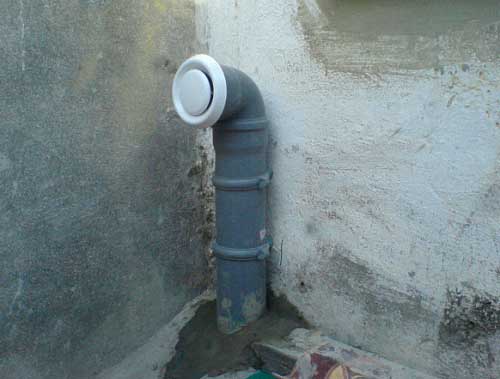 However, under no circumstances is it possible to install an exhaust pipe with a diameter less than that of the supply pipe, since under such conditions the air may begin to remain from inside the room. This will negatively affect the food stored in the cellar, but the main threat is always different - some danger is formed to the well-being of a person when he descends into a gassed underground room.
However, under no circumstances is it possible to install an exhaust pipe with a diameter less than that of the supply pipe, since under such conditions the air may begin to remain from inside the room. This will negatively affect the food stored in the cellar, but the main threat is always different - some danger is formed to the well-being of a person when he descends into a gassed underground room.
- Never place these two ventilation pipes close to each other., since the room in this case will not be well ventilated. They should be installed on opposite walls or in opposite corners.
This is done in order to ensure that the new flow, before going out into the street, passes through the entire room and stirs the stagnant air to the outlet into the exhaust pipe.
- The exhaust pipe opening should be installed in front of the ceiling, as the warmer air produced tends to rise.
Its location is enough to promote stable air cleaning, without stagnation in the ceiling area, and hence excellent food safety. 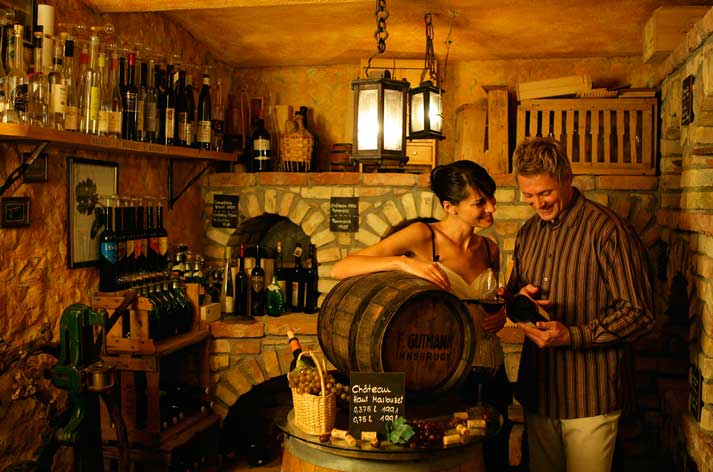
- Ventilation tube rises above the ridge for superior traction or embankments above the ceiling of the cellar, at least 1500 millimeters.
- For the ventilation concept, plastic pipes are often used only. appointed for the purpose of sewerage. For not very large rooms of this diameter, as a rule, there is plenty.
- If the basement is located in front of a car garage or in front of another home place, in this case as an exhaust opening, it is allowed to operate the entrance opening.
In this case, 2 doors are made, one insulated - winter, and the other - in the version of the frame, with a small mesh attached to it. The fence is needed so that small rodents do not jump into the cellar.
The insulated opening is removed in the summer in order to continuously ventilate the cellar. If the room above the basement is insulated, in this case it is allowed to carry out ventilation sessions in the winter period.
Version - cellar in the basement under the house
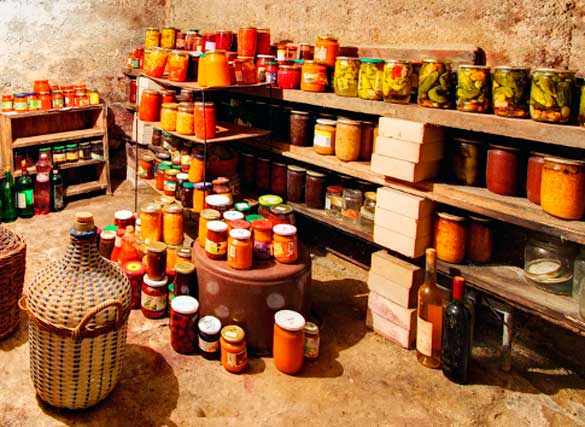
Supply pipe narrowed by a grate
- It is recommended to install dampers in these two pipes that stabilize the flow and decrease of air, which is especially needed in the winter phase. They can help to measure the arrival of cool air in extreme cold and therefore the loss of warm air to reinforce the required local climate in the cellar.
Umbrella for exhaust pipe head
If the pipe heads are placed exactly in a vertical position, they should be protected from precipitation, dust and debris from getting inside by placing a metal umbrella or a ventilation deflector on top. 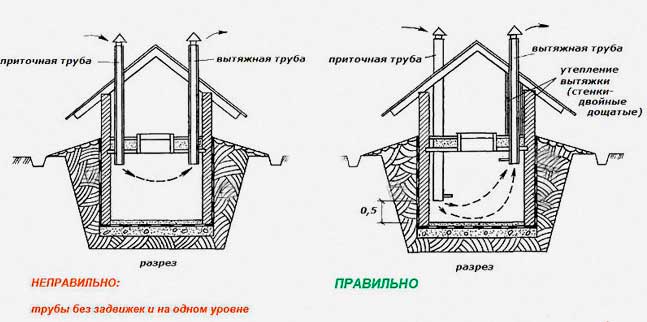
Ventilation deflector- this is an ideal view, since it bases artificial rarefaction and increases gravity.
When using a deflector, a rarefaction sphere is formed around it, and this manifestation contributes to an increase in traction.
- The section of the exhaust pipe, located on the street, has to be perfectly insulated, in order to avoid the occurrence of condensate in the cold season.
Types of cellar ventilation designs
There are 2 basic types of fan structures It is natural and forced. And this or another type is chosen in connection with the size and layout of the basement.
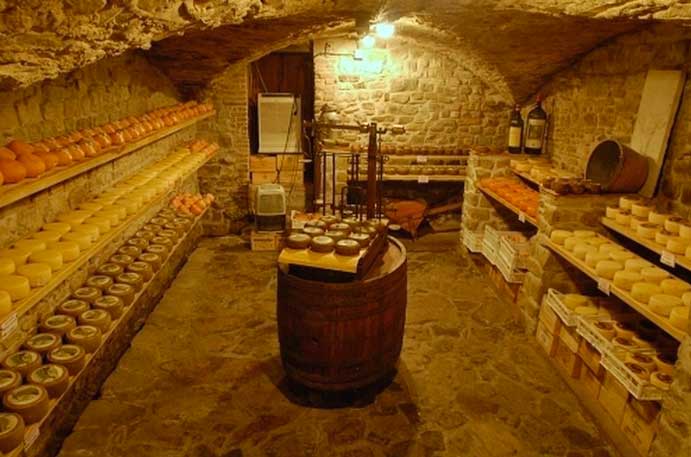 natural ventilation based on the difference in pressure and temperature indoors and outdoors. Effective work largely depends on the correct location of the pipes. So, the air inlet must be at a maximum height of 250: 300 millimeters from the floor, and the exhaust - below the degree of the ceiling by 100: 200 millimeters.
natural ventilation based on the difference in pressure and temperature indoors and outdoors. Effective work largely depends on the correct location of the pipes. So, the air inlet must be at a maximum height of 250: 300 millimeters from the floor, and the exhaust - below the degree of the ceiling by 100: 200 millimeters.
It is unacceptable to place it lower so far, otherwise the ceiling will start to get wet.
This method of ventilation can be undoubtedly small for a large cellar room, or if it consists of many rooms.
V forced ventilation method there are always the same channels (pipes), however, fans are installed in them to form forced air movement.
In the lightest modes of forced type, the cooler is brought to the exhaust channel. In a similar way, artificial milling is formed in the room, facilitating the initiative flow of cool air into the basement through the supply passage. The performance of the selected propeller will depend on the size of the room.
They act differently - they put fans on both the supply and exhaust paths. This happens significantly in voluminous, complex basement rooms. Here you will certainly need the support of a professional in order to calculate the coherence of the inflow and outflow of the atmosphere, that is, the diameters of the channels and the power (performance) of the fans installed in them.
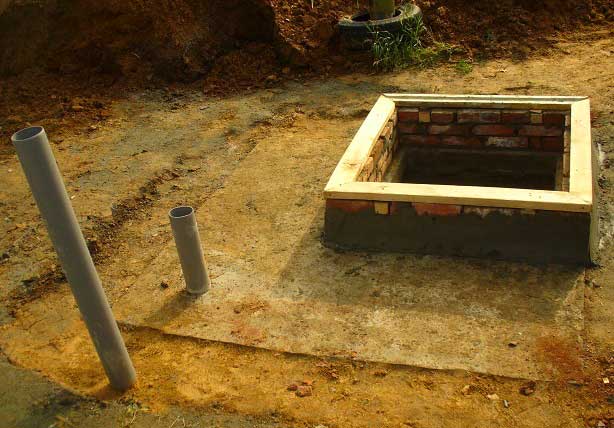 For each type of ventilation, be sure to correctly make your choice with pipe diameters. The calculation methods used by high-class designers are very difficult, and it is practically of no importance to give them in their entirety. However, when installing ventilation in a small private cellar, it is allowed to use a simple calculation methodology.
For each type of ventilation, be sure to correctly make your choice with pipe diameters. The calculation methods used by high-class designers are very difficult, and it is practically of no importance to give them in their entirety. However, when installing ventilation in a small private cellar, it is allowed to use a simple calculation methodology.
So, with certain assumptions applicable in the information criteria, it is assumed that for the purpose of 1 square meter of the cellar area, 26 square cm of the section of the ventilation duct section is needed. So, for a sample, you can estimate what pipe diameter will be needed for a cellar on a scale of 3, multiply 2 meters.
Finding the area of the room:
S = 3 by 2 and = 6 square meters
According to the confirmed compliance, it will need a pipe of the following size:
T \u003d 6 times 26 \u003d 156 square centimeters
It remains to find this radius of the pipe:
R = root (T divided by PI) = root (156 divided by 3.14) will be approximately 7.05 cm
So, the diameter of the supply pipe:
The diameter will be approximately 14 cm = 140 millimeters.
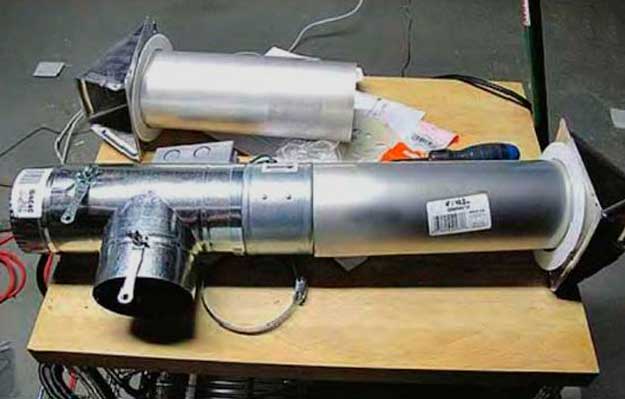 If only supply ventilation is introduced in the basement, and the hole will play the role of the exhaust, in this case it is allowed to slightly increase the profile of the inlet channel by defining a pipe with a diameter of 150 millimeters.
If only supply ventilation is introduced in the basement, and the hole will play the role of the exhaust, in this case it is allowed to slightly increase the profile of the inlet channel by defining a pipe with a diameter of 150 millimeters.
To guarantee air exchange, it is customary to install a pipe with a diameter on the exhaust duct, 10, we expect 15% more than at the inlet.
Dv \u003d Dn add 15% \u003d 140 add 21 and it will be approximately 160 millimeters.
Ventilation installation
Having carried out the necessary calculations, always acquiring the above-described nuances of interest, it is allowed to proceed to the installation of ventilation.
Approximate location of supply and exhaust pipes.
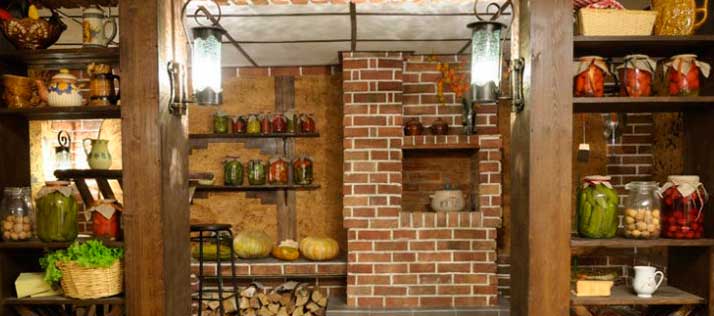
The supply pipe is permanently placed below.
- In the opposite corner of the cellar, in addition, a passage is made in the ceiling or in the wall, and a supply pipe is inserted into it and fixed, which is lowered down to the floor. It must be placed no lower than 200 millimeters from the floor and no more than 500 millimeters;
- On the street, the supply pipe does not need to be placed high. If it exits through the ceiling, raise it sufficiently by 200-250 millimeters. It is necessary to take into account in this case that the difference in pressure at the inlet and outlet is much more powerful and has sufficient pressure, and therefore the flow of the atmosphere into the cellar;
- If the supply pipe is introduced through a wall, then a fan enclosure or a plastic reflector is put into it.
Possible location of the supply pipe.
- In this case, if the installation of ventilation for the cellar is carried out in the dwelling, a fireplace or stove is installed in that place, it is recommended to raise the exhaust pipe close to the chimney, as this activates the removal of the worked air from the basement due to the large temperature difference.
Dampers on pipes can help to precisely coordinate the course of ventilation.
- It is recommended to install dampers on the pipes from the inside of the cellar to regulate the power of light flows. By their invention, the circulation power, moisture content and air temperature are regulated to the required clearance in the room. Actually, the presence of a damper and the correct regulation of the local climate in the cellar will determine whether enough air is saved.

